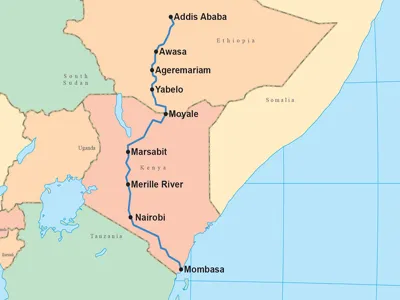Work is nearing completion on Nigeria’s important East-West road project. The new dual carriageway link should be ready to carry traffic in a matter of months. In all the project was originally expected to cost in the order of US$1.93 billion to construct and work commenced back in 2006. However an additional stretch may now be added that will extend the route. This project is of significance as it improves transport links to the South East of Nigeria, an area of the country that has long been overlooked fo
March 11, 2015
Read time: 2 mins
RSSWork is nearing completion on Nigeria’s important East-West road project. The new dual carriageway link should be ready to carry traffic in a matter of months. In all the project was originally expected to cost in the order of US$1.93 billion to construct and work commenced back in 2006. However an additional stretch may now be added that will extend the route.
This project is of significance as it improves transport links to the South East of Nigeria, an area of the country that has long been overlooked for infrastructure investment. This underdevelopment has been in spite of the Niger Delta’s economic importance to the country as a whole as it is the location for much of Nigeria’s oil industry, its prime source of revenue. The dual carriageway route presently runs through four states, Delta, Bayelsa, Rivers and Akwa Ibom. The section in Delta State is now complete, and runs from the town of Warri. The road will end at Eket in Akwa Ibom State at present, although there are plans to extend the dual carriageway into Cross River State and link with one of Nigeria’s former capitals, Calabar. The additional link is expected to cost an additional $1 billion and may involve a degree of complexity to construct as it will require a number of bridges to cross the numerous creeks in the area.
This project is of significance as it improves transport links to the South East of Nigeria, an area of the country that has long been overlooked for infrastructure investment. This underdevelopment has been in spite of the Niger Delta’s economic importance to the country as a whole as it is the location for much of Nigeria’s oil industry, its prime source of revenue. The dual carriageway route presently runs through four states, Delta, Bayelsa, Rivers and Akwa Ibom. The section in Delta State is now complete, and runs from the town of Warri. The road will end at Eket in Akwa Ibom State at present, although there are plans to extend the dual carriageway into Cross River State and link with one of Nigeria’s former capitals, Calabar. The additional link is expected to cost an additional $1 billion and may involve a degree of complexity to construct as it will require a number of bridges to cross the numerous creeks in the area.







